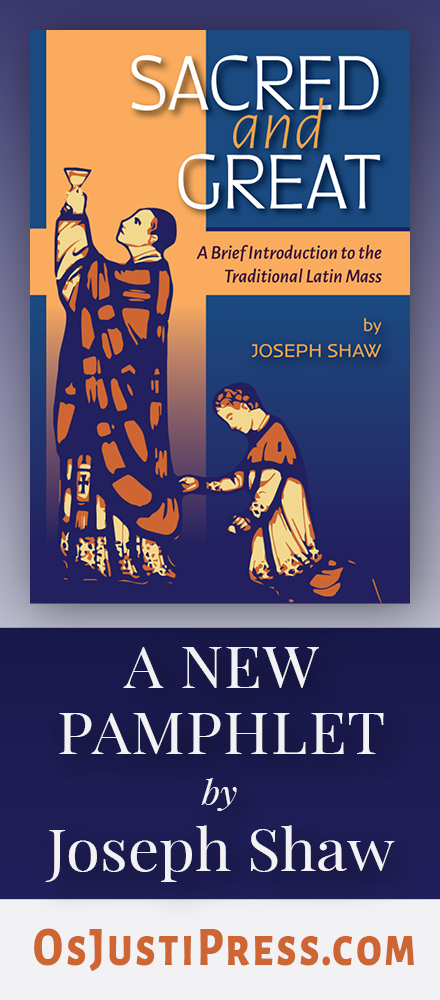A reader wrote to me:
Letter of April 3, 1985, from the Congregation for Divine Worship to the National Conference of Catholic Bishops [Prot. 720/85]:
I will repeat what one canon lawyer wrote to me on February 29:
A second canon lawyer agreed:
UPDATE:
A kindly reader send me the following letter from the Congregation for Divine Worship and the Discipline of the Sacraments, dated 24 July 2009, written at the time of an earlier flu outbreak. This letter confirms all of the foregoing.
I saw your article about how Holy Communion cannot be given in the hand at the Extraordinary Form. However, in a church I attend for daily Ordinary Form Mass, an announcement has just been posted that the pastor requires us to receive now in the hand because of the coronavirus. My understanding is that we can receive in the hand by permission but reception on the tongue cannot be taken away, though searching for a document stating as much has been difficult. Can you point me in the right direction?Here are four pertinent texts:
Letter of April 3, 1985, from the Congregation for Divine Worship to the National Conference of Catholic Bishops [Prot. 720/85]:
The Holy See, since 1969, while maintaining the traditional manner of distributing communion, has granted to those Episcopal Conferences that have requested it, the faculty of distributing communion by placing the host in the hands of the faithful… The faithful are not to be obliged to adopt the practice of communion in the hand. Each one is free to communicate in one way or the other.Response by the Congregation for Divine Worship and the Discipline of the Sacraments, Notitiae (April 1999):
Query: Whether in dioceses where it is allowed to distribute Communion in the hands of the faithful, a priest or extraordinary ministers of Holy Communion may restrict communicants to receive Communion only in their hands, not on the tongue.General Instruction of the Roman Missal. Issued by the Congregation for Divine Worship and the Discipline of the Sacraments, November 12, 2002; US edition 2011, n. 161:
Response: Certainly it is clear from the very documents of the Holy See that in dioceses where the Eucharistic bread is put in the hands of the faithful, the right to receive the Eucharistic bread on the tongue still remains intact to the faithful. Therefore, those who restrict communicants to receive Holy Communion only on in the hands are acting against the norms, as are those who refuse to Christ’s faithful [the right] to receive Communion in the hand in dioceses that enjoy this indult.
If Communion is given only under the species of bread, the Priest raises the host slightly and shows it to each, saying, The Body of Christ. The communicant replies, Amen, and receives the Sacrament either on the tongue or, where this is allowed, in the hand, the choice lying with the communicant.Redemptionis Sacramentum—Instruction On Certain Matters to be Observed or to be Avoided Regarding the Most Holy Eucharist, the Congregation for Divine Worship and the Discipline of the Sacraments, March 25, 2004, art. 92:
Although each of the faithful always has the right to receive Holy Communion on the tongue, at his choice, if any communicant should wish to receive the Sacrament in the hand, in areas where the Bishops’ Conference with the recognitio of the Apostolic See has given permission, the sacred host is to be administered to him or her.(Again, to avoid all possible confusion, all of the above legislation applies only to the Ordinary Form or Novus Ordo Missae.)
I will repeat what one canon lawyer wrote to me on February 29:
From my perspective, a bishop cannot require anyone to receive in the hand. Even in the Ordinary Form, the prescription is communion on the tongue, with the right to approach and receive in the hand. The norm is the norm, and it is based on the right of the faithful to choose how to worship God at a moment in the Mass that is deeply personal and not communal in nature. My opinion is based on the repeated jurisprudence from the Holy See upholding the rights of a Catholic to receive communion on the tongue while kneeling during an OF Mass, even if his or her bishop has issued a particular law to the contrary. Such laws are considered suggestive in nature and in no way binding.If this is true for a bishop’s law, a fortiori it is true of a pastor of a parish. A layman may not be denied the Blessed Sacrament unless he is a notorious public sinner. A priest who, on his own initiative, told the people they must receive in the hand would be violating the law and leading the people into the violation of it.
A second canon lawyer agreed:
In a medical emergency the bishop has a right to take reasonable steps to protect the health of parishioners. That being said, the faithful should do what they want and feel no obligation to receive Holy Communion in the hand. They cannot be required to do that in either the OF or (theoretically) the EF in emergency circumstances.On a practical note, many have pointed out that germs are spread as easily by frequent hand contact as by placing the host in the mouth (which, if the priest knows what he’s doing, should not involve any transfer of saliva), as Bishop Athanasius Schneider has recently explained.
UPDATE:
A kindly reader send me the following letter from the Congregation for Divine Worship and the Discipline of the Sacraments, dated 24 July 2009, written at the time of an earlier flu outbreak. This letter confirms all of the foregoing.






















